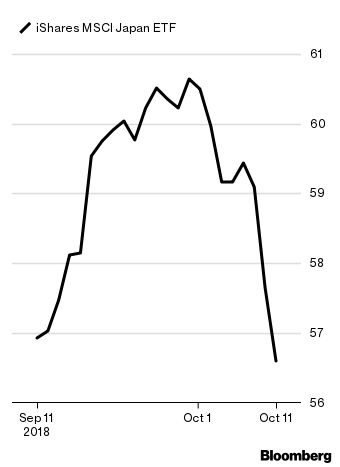[ad_1]
The past couple of weeks had something for everyone when it comes to retail. A pair of high-profile releases offered conflicting views on the health of American retailers, confusing the outlook for the industry.
Last Thursday, the Census Bureau reported that U.S. retail and food service sales in December tumbled 1.2% from November to December, the steepest monthly decline since 2009. Even e-commerce, usually a consistent bright spot for sales, fared poorly in December, slipping 3.9% month-over-month.
Understandably, the $265 million SPDR S&P Retail ETF (XRT), one of the largest retail ETFs on the market, fell on the news, losing 0.20%.
Things were looking gloomy for retail, but not for long. On Tuesday, Walmart, the largest retailer in the world and a bellwether for retailers at large, reported blowout sales, lifting spirits for the entire group.
XRT climbed 0.50% on Tuesday and another 0.15% on Wednesday, putting the ETF up 11.4% on a year-to-date basis.
Look Past Single Data Point
Clearly, last week’s dismal retail sales data didn’t have much of a lasting market impact. But how does one reconcile the weak December figures with the rosy outlook from Walmart and the bullish price action in XRT?
Well, for one, December’s retail sales data was just that—a single data point for a single month. Retail sales for 2018 as a whole and even just the fourth quarter, were much stronger.
The Census Bureau says that sales were up 3.7% year-over-year in Q4 and 2.3% year-over-year in 2018. That matches what Walmart said. The firm’s same-store sales in Q4 rose 4.2%, a bit more than the whole industry, but not that far off.
In other words, the December data notwithstanding, retail sales aren’t falling off a cliff. That also jives with other economic data, such as nonfarm payrolls and business surveys, which suggest steady growth in the U.S. economy.
E-Commerce Still Dominating
Before you get too enthusiastic about the retail rebound, things have to be put in perspective. XRT is still a ways from its all-time high—13%—compared to only 5% for the S&P 500. What’s more, the ETF hasn’t really made much headway since 2015. Since topping out about four years ago, the fund has essentially been rangebound.
This is in large part because of the struggles that brick-and-mortar retailers have faced in the face of the growing e-commerce threat.
Indeed, Walmart’s strong fourth quarter was in large part due to strong online sales, which surged 43%. The data for the full year isn’t in yet, but the Census Bureau estimates that total e-commerce sales through the first three quarters of 2018 were up 14.5%, three times the growth rate of retail sales as a whole.
Brick-And-Mortar Bankruptcies
These figures do nothing to change the prevailing narrative that e-commerce is eating the lunch of traditional brick-and-mortar retailers. Some of the old guard, like Walmart, are adapting. But others, such as Sears, Office Depot, Toys “R” Us and many others have struggled in the new era.
According to CB Insight, since 2015, 57 major retailers declared bankruptcies, due to “struggling physical storefronts, massive debt, and inefficient operations, among other issues.”
With e-commerce still only making up 1/6ath of all retail sales, there’s a case to be made that online sales will continue to grow briskly at the expense of physical storefronts, weighing on shares of many retail stocks, and by extension, ETFs.
E-Commerce ETF
With such a stark outlook for retail, investors may be wondering whether there’s a better way to invest in the space. Perhaps there is.
The Amplify Online Retail ETF (IBUY) holds a basket of stocks that derive the majority of their sales from online—at least 75%. It’s a way to bet on the growth in e-commerce while shunning traditional brick-and-mortar retailers IBUY holds nearly $300 million in assets under management, which is more than XRT.
The strategy has paid off. Since its inception in Apr. 2016, IBUY is up 88.9%, easily outpacing the 4.3% gain in XRT during the same time period.
IBUY vs XRT Performance

Source: Bloomberg
AUM For IBUY (Blue) And XRT (Orange)

Source: Bloomberg
New Choices
IBUY’s success has naturally spawned competing e-commerce-focused ETFs such as the $32 million ProShares Online Retail ETF (ONLN) launched last July. While the two funds hold similar names and limit international exposure at 25%, they have drastically different weighting schemes.
IBUY is equal-weighted, while ONLN is market-cap-weighted. The effect of cap-weighting is particularly pronounced in ONLN; Amazon and Alibaba account for a whopping 39.4% of the fund.
Meanwhile, the newest entrant into the space, the $1.6 million Global X E-commerce ETF (EBIZ) stretches its exposure outside of online retailers themselves. Software and service companies that facilitate e-commerce, like Shopify, are included in its holdings.
Aggressive Options
Finally, for investors or traders who want to take an even more aggressive position in the rise of e-commerce and/or the demise of brick-and-mortar retailers, there’s a pair of products that help with that.
The aptly named $5 million ProShares Decline of the Retail Store ETF (EMTY) provides inverse exposure to an index of retail companies that receive more than three-quarters of their revenue from in-store sales.
Its sister product, the $46 million ProShares Long Online/Short Stores ETF (CLIX) combines 50% of that inverse exposure with 100% long exposure to a basket of e-commerce stocks.
The long/short ETF has done pretty well since inception in Nov. 2017, gaining 19.5%. On the other hand, the pure inverse fund has lost 13.4% in the same period.
Performance For EMTY And CLIX

Source: Bloomberg
Email Sumit Roy at [email protected] or follow him on Twitter sumitroy2
[ad_2]
Source link

